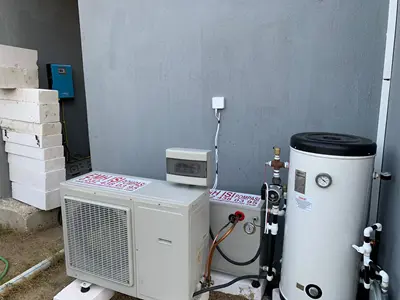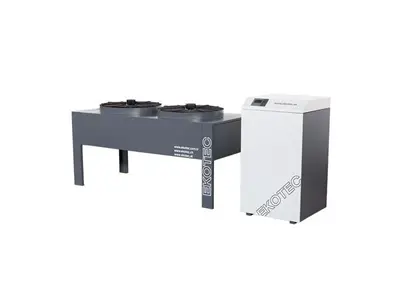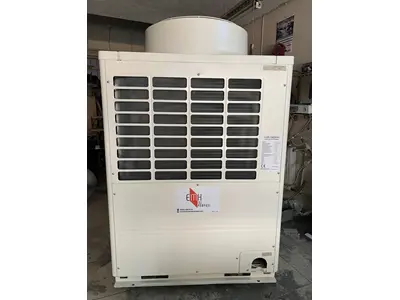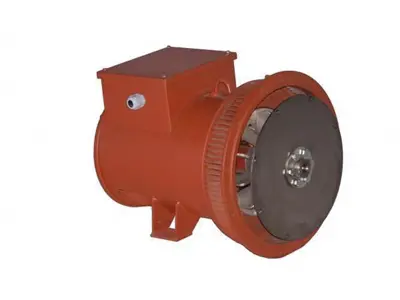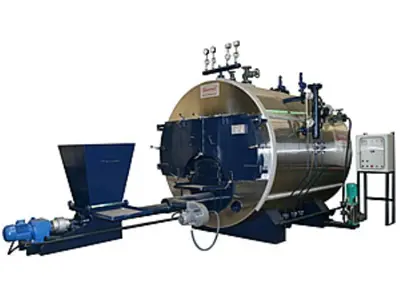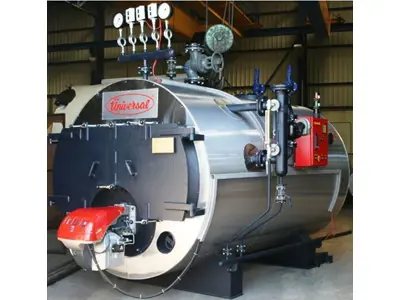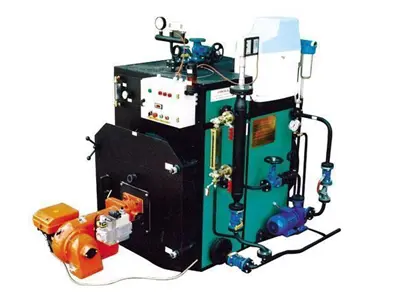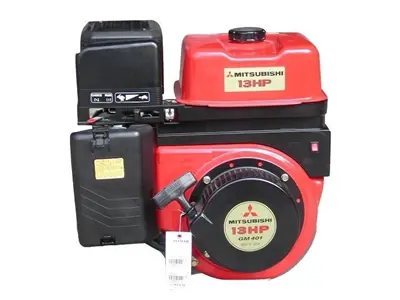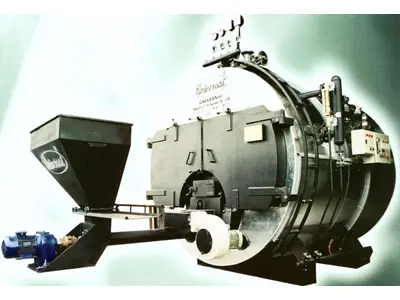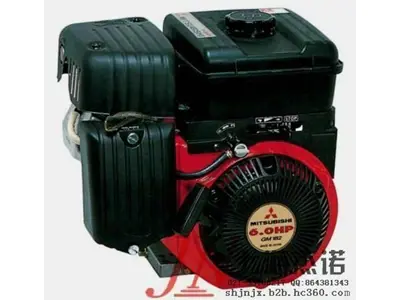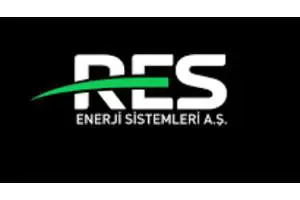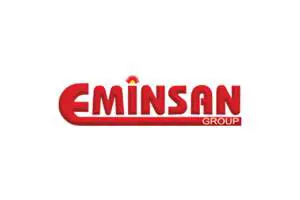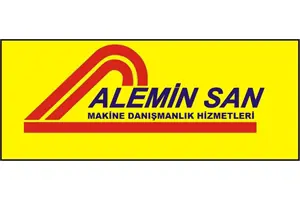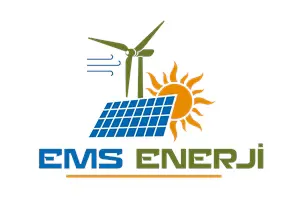Heat Pump Popular Products
What is a Heat Pump?
Heat pumps operate on a cycle system based on thermodynamic principles. In this cycle, heat is extracted from a low-temperature source, transferred to a high-temperature location, and this process is repeated continuously. A heat pump, which has both heating and cooling capabilities with a single device, is a pump that allows the temperature of unused energies in nature to be raised by utilizing them, as they are not used due to being low in temperature. In order to achieve maximum efficiency, the most suitable type of heat pump should be installed considering the ambient temperature. A heat pump consists of a closed circuit containing a refrigerant. It absorbs heat from outside a structure and performs the same vapor compression cooling process. It uses the same equipment as air conditioners and refrigerators. You can get brand, model, technical support, and price information from companies selling heat pumps in our structure.
The energy sources for a heat pump are air, water, and earth, which are renewable energy sources found in nature. By feeding these energy sources with electricity, a heat pump converts them into heat for heating systems of buildings, also known as climate control systems. Heat pumps provide about 75% of the required energy from natural sources and the remaining 25% from electricity on average. It creates a cycle consisting of evaporation, compression, condensation, and expansion, gathering heating, cooling, and hot water usage in one place and ensuring the highest energy utilization at minimum costs.
How Does a Heat Pump Work?
Heat pumps absorb outside air to heat and transfer the heat to the energy pool, where the heat is evaporated in the evaporator while being exposed to the refrigerant. The temperature is raised to the required level at this stage. The high-temperature, high-pressure gas enters the condenser, where energy is transferred to the distribution medium. The refrigerant vapor is cooled and returns to a liquid state. This liquid is sent to the expansion valve. The refrigerant, which is now in a low-pressure, low-temperature liquid state ready to enter the evaporator, goes through a closed cycle. This heat is then used to heat radiators, underfloor heating systems, or hot air convectors, and domestic hot water in your home. In short, a heat pump performs the task of transporting heat from one place to another by moving energy.
It takes in the free energy from the external environment and transports it into the interior of the house through a hydraulic module. This free energy is carried into the hydraulic module using an environmentally friendly refrigerant with high thermal conversion coefficient, where the liquid in gas phase is compressed by a compressor to a level that can be used for heat and hot water production, and the energy and pressure are transferred from the high-temperature, high-pressure fluid to the heating and hot water circuits in your home through another heat exchanger.
For cooling the house in the summer, it reverses the cycle used for heating by applying the opposite cycle. It absorbs heat from the indoor air and releases heat outside. As in the heating cycle, the liquid refrigerant passes through the expansion device and is converted into a low-pressure liquid/vapor mixture. Then it goes to the inner coil acting as the evaporator. The liquid refrigerant absorbs heat from the indoor air and vaporizes by boiling, turning into low-temperature vapor. This vapor passes through the reversing valve to the accumulator and then to the compressor. The vapor is compressed, reducing its volume and causing the air to warm up. Finally, the now hot gas passes through the reversing valve to the external coil acting as the condenser. The heat coming from the hot gas is transferred to the outside air, causing the refrigerant to condense back into a liquid. This liquid returns to the expansion device, and the cycle repeats, thus the heat pump has performed the cooling process. All heat pumps extract the energy needed for heating or cooling from natural sources, but their usage models differ. A heat pump is divided into 3 types.
Air Source Heat Pump: The energy source is air. It can be preferred in temperate climates. There are 2 different types of air source heat pumps: monoblock air source heat pump and split air source heat pump. It is more cost-effective to install than other heat pumps, making it a more popular type.
Water Source Heat Pump: The energy source is water; installation can be done in any structure near a natural water source. It continues to produce heat even when the water temperature is as low as -15 degrees.
Ground Source Heat Pump: It can be preferred in regions with colder climates. The energy source is the ground, but before installation, it should be checked whether the land in the area to be used is suitable. It is installed horizontally and vertically with pipes resistant to corrosion and not decaying underground. It is more expensive compared to other types of heat pumps.
What is the Operating Principle of a Heat Pump?
Heat pumps work by taking the energy they receive from outside and feeding it with electricity inside, transferring it as heat to applications such as pools, taps, radiators, and underfloor heating systems. They can be used for heating as well as cooling purposes. All heat pumps work on the same principle; a heat pump used for heating in winter can also be used for cooling in summer. A heat pump is a pump that transfers the energy needed for heating or cooling from the air, water, or ground to the system. Being economical to install and also easily available makes air-source heat pumps the most widely used type in Turkey under today's conditions. Since it operates independently from coal, oil, natural gas, and fossil fuels, heat pumps operate without emitting any emissions. Heat pumps can be used not only in homes but also in an industrial context, suitable for use in apartments, hotels, villas, pools, baths, greenhouses, shopping centers, and office buildings.
How Much Electricity Does a Heat Pump Consume?
The efficiency of a heat pump is defined by the performance coefficient, also known as CoP, which calculates the ratio of the energy produced or, in other words, the energy available for heating or cooling to the input energy of the process. The amount of energy taken in and out is measured to determine it. For example, a heat pump with a CoP value of 4 can generate 4 kW of heat for every 1 kW of electricity consumption, so for a house, an average of 16,000 kW/h of heat is needed per year. With a CoP of 6, a heat pump consumes 24,000 kW/h of electricity per year. This calculation varies depending on the insulation of your home, how much hot water you use, and the size of your house, so the calculation of the heat pump varies.
Heat Pump Prices
In order to calculate the prices of heat pumps, first, it must be decided which type of heat source will be installed in the structure. Besides the type of heat pump, in order to make pricing calculations, information about the brand of the pump, the daily average hot water usage requirement, cooling power requirement for cooling, the age of the building, the purpose of the building, whether it is insulated, the region where the building is located, and other characteristics should be known. Since the structures and features to be used vary, solutions and pricing to meet the needs also vary. You can reach and buy from companies selling heat pumps and providing services through our portal. Through our portal, you can reach companies that carry out all kinds of heat pump projects, manufacturing, and sales, offering authorized service guarantee after sales.
